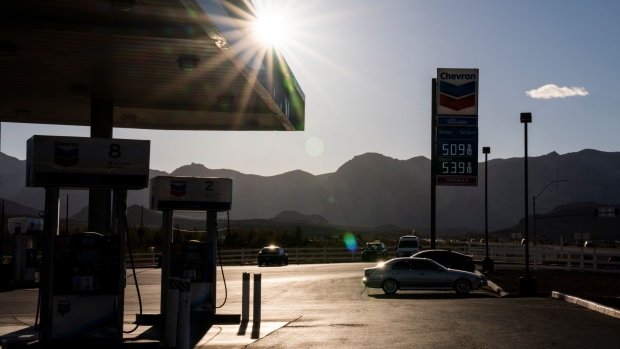Feb 28, 2023
Chevron Boosts Annual Share Buyback Rate to $17.5 Billion
, Bloomberg News

(Bloomberg) -- Chevron Corp. increased the annual rate of share buybacks in a show of confidence in its cash-generation goals, even after crude prices declined by more than 30% since June.
Chevron will repurchase stock at a rate of $17.5 billion a year beginning in the second quarter, 17% higher than the previous target, and increased the top end of its buyback range by a third to $20 billion a year, giving scope to raise even further in the future.
Executives were keen to differentiate Chevron from its peers both in the US and Europe by sticking with shareholder payouts even when commodity prices slump and by investing in the energy transition without diluting returns. They sought to diffuse concerns over Chevron’s oil and gas project queue by committing to 3% production growth annually, largely driven by the US Permian Basin, and said low-carbon projects would face the same investment hurdles as fossil fuels.
“We expect to grow profitably our traditional and low carbon businesses without sacrificing gains, efficiencies or free cash flow,” Vice Chairman Mark Nelson said at a presentation in New York.
Earlier this month, BP Plc enacted a strategic pivot by investing more than planned in fossil fuels to better take advantage of strong commodity prices and offset investor concerns it was spending too much on lower return renewables. Chevron said its energy-transition strategy will focus on renewables and carbon-abatement technologies rather than standalone wind and solar, and will be required to achieve the same returns as fossil-fuel business over time.
The company also has plans produce more oil and gas, with nearly 900,000 barrels a day of new output coming from the Permian Basin, Kazakhstan, Gulf of Mexico and elsewhere by 2027. The Permian will lead the charge with half the expected increase and should overcome 2022 productivity problems this year, Executive Vice President Nigel Hearne said.
Chevron still expects the biggest US shale basin to be the cornerstone of medium-term growth. Production will rise by more than 35% to the equivbalent of almost 1.2 million barrels a day by 2027, it said. TCO, Chevron’s major Kazakh operation, will also provide significant new production once its Future Growth Project is running by 2025.
This growth will come despite a flat capital budget, with annual free cash flow increasing more than 10% at $60-a-barrel Brent prices, Chevron said.
“The objective is to grow the company with the least amount of capital,” Chief Financial Officer Pierre Breber said. “We’ve seen the other movie, that was 10 years ago, when we maximized capital and didn’t even grow at these rates. We lost investors. We’re working hard to win investors back to energy. We made some progress last year. We still have a long way to go.”
US President Joe Biden has repeatedly criticized Chevron and its rivals for what he says is excessive spending on buybacks following Russia’s invasion of Ukraine. The administration has called for more investment in oil production to boost supplies and curtail fuel-price inflation.
But Chevron Chief Executive Officer Mike Wirth and much of the rest of the US oil industry have pushed back, arguing that production is increasing, and in any case shareholders are entitled to higher payouts after a decade of poor stock market returns.
Chevron dropped 0.8% to $161.56 a share at 11:44 a.m. in New York, in line with the other oil supermajors.
(Updates with executives’ comments from fourth paragraph.)
©2023 Bloomberg L.P.






